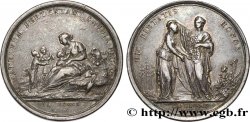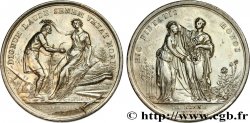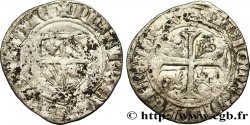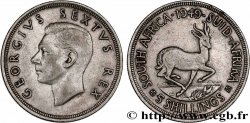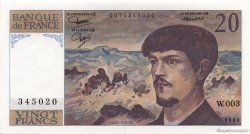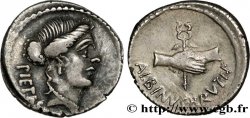fjt_072913 - NORMANDIE (NOBLESSE ET VILLES DE...) Jeton Ar 28, Pierre le Marchant, trésorier général des finances à Caen 1625
No disponible.
Artículo vendido en nuestra tienda (2012)
Precio : 145.00 €
Artículo vendido en nuestra tienda (2012)
Precio : 145.00 €
Tipo : Jeton Ar 28, Pierre le Marchant, trésorier général des finances à Caen
Fecha: 1625
Metal: plata
Diámetro: 28 mm
Eje de acuñación: 6 h.
Canto: lisse
Grado de rareza: R2
Comentarios sobre el estado de conservación:
Une usure régulière de circulation mais un très bel exemplaire avec un beau portrait
N° en los catálogos de referencia :
Anverso
Titulatura del anverso: .PIERRE. LE. MARCHANT. EER. SR. DE. ROZEL. CER. D. R. TRER. GNL. D. ER. A. CAEN.
Descripción del anverso: Buste à droite en habit avec un col plat de Pierre Le Marchant.
Traducción del anverso: (Pierre le Marchant, écuyer sieur de Rozel conseiller du roi trésorier général à Caen).
Reverso
Titulatura del reverso: * NOSTRI * SERVABIT * ODOREM * 1625.
Descripción del reverso: Écu aux armes de Pierre le Marchant surmonté d’un heaume et lambrequiné.
Traducción del reverso: (Il préservera notre parfum).
Comentario
Pierre Le Marchant est écuyer et porte d'argent, au chevron de gueules, accompagné de 3 roses de même posées deux et un. Deux localités appelées Saint-Manvieu existent : Saint-Manvieu-Bocage (canton de Saint-Sever-Calvados, Calvados) et Saint-Manvieu-Norrey (canton de Tilly-sur-Seulles, Calvados). Pierre Le Marchant est aussi seigneur du Rozel (canton de Les Pieux, Manche). Conseiller et secrétaire du roi, trésorier général de France à Caen, il mourut dans cette ville où il est inhumé dans l’église des Cordeliers. Il est le dernier mâle de cette branche. Le bureau des finances d’une généralité est composé de sept personnes : cinq trésoriers généraux de France (deux pour le Domaine, deux pour les aides et imposition, un trésorier) ainsi qu’un greffier et un huissier. L’institution tombe en une profonde inutilité aux XVII et XVIIIe siècles : un autre trésorier de France fut célèbre à Caen, la Bruyère, qui en douze ans, n’est venu que le jour de sa réception.
Pierre Le Marchant is a squire and bears argent, with a chevron of gules, accompanied by 3 roses of the same placed two and one. Two localities called Saint-Manvieu exist: Saint-Manvieu-Bocage (canton of Saint-Sever-Calvados, Calvados) and Saint-Manvieu-Norrey (canton of Tilly-sur-Seulles, Calvados). Pierre Le Marchant is also lord of Rozel (canton of Les Pieux, Manche). Advisor and secretary to the king, general treasurer of France in Caen, he died in this city where he is buried in the church of the Cordeliers. He is the last male of this branch. The finance office of a generality is composed of seven people: five general treasurers of France (two for the Domain, two for aid and taxation, one treasurer) as well as a clerk and a bailiff. The institution fell into profound uselessness in the 17th and 18th centuries: another treasurer of France was famous in Caen, La Bruyère, who in twelve years, only came on the day of his reception
Pierre Le Marchant is a squire and bears argent, with a chevron of gules, accompanied by 3 roses of the same placed two and one. Two localities called Saint-Manvieu exist: Saint-Manvieu-Bocage (canton of Saint-Sever-Calvados, Calvados) and Saint-Manvieu-Norrey (canton of Tilly-sur-Seulles, Calvados). Pierre Le Marchant is also lord of Rozel (canton of Les Pieux, Manche). Advisor and secretary to the king, general treasurer of France in Caen, he died in this city where he is buried in the church of the Cordeliers. He is the last male of this branch. The finance office of a generality is composed of seven people: five general treasurers of France (two for the Domain, two for aid and taxation, one treasurer) as well as a clerk and a bailiff. The institution fell into profound uselessness in the 17th and 18th centuries: another treasurer of France was famous in Caen, La Bruyère, who in twelve years, only came on the day of his reception








 Informar de un error
Informar de un error Imprimir la página
Imprimir la página Comparte mi selección
Comparte mi selección Haz una pregunta
Haz una pregunta Consignar / vender
Consignar / vender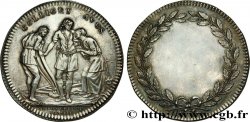
 Descriptivo
Descriptivo